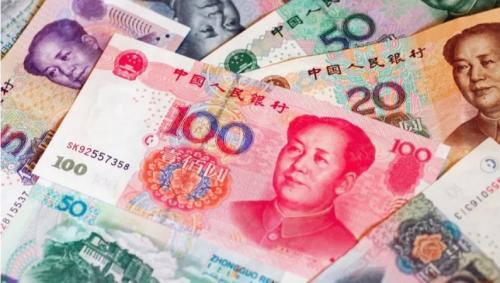The RCEP and the misleading Yuan
The growing demand for Chinese currency-denominated assets clashes with capital controls to prevent sudden capital outflows.
- Análisis

The Regional Comprehensive Economic Partnership (RCEP) reflects world trade's polarisation that accelerated with the US-China trade war. It strengthens Asian regional integration and provides China with an opportunity to increase the Renminbi's influence (RMB), as we shall see below. The RCEP does not envisage the creation of a monetary union, nor does it stipulate the use of any specific currency. But China has sought to internationalise its currency and this is one further means.
Since 2009, China developed a monetary strategy that promotes the Renminbi as an international means of exchange. The government then conducted a pilot programme that allowed small businesses to use the Yuan to buy and sell their products. Ten domestic and three foreign banks were authorized to deal in cross-border transactions between China, Hong Kong, Macao, and ASEAN member countries. Subsequently, she created a framework that allows public and private entities to issue local currency-denominated bonds.
These actions resulted in the export of RMB 5 for every RMB 1 that entered. Five years later, this shrunk to RMB 0.96 cents for every 1 that entered. It signed swaps and opened credit lines agreements with South American countries (Chile, Brazil, and Argentina) for up to $10 billion to purchase Chinese products during this period.
The Chinese government seeks to place its currency as an international reserve currency. Since 2016, it managed to put it in the Special Drawing Rights basket, at the Monetary Fund, with a 10.9% share while signing agreements with international financial institutions such as the World Bank or regional development banks. Nevertheless, according to the IMF, in the second quarter of 2020, the Yuan's proportion of world reserves reached 2.05%, and the US dollar 61.3%.
In 2017, it took a further step to convert its currency into a reference currency, backed by the Russian government, which announced the issuance of oil futures denominated in yuan. For the time being, oil is the only commodity whose futures market includes this currency. If the growth pace is maintained and she becomes further integrated with her neighbours, then the futures market in this currency will grow and allow international prices in RMB.
The growing demand for Chinese currency-denominated assets clashes with capital controls to prevent sudden capital outflows. These are to avoid external attacks on the market, like in Tokyo in 1990, London in 1992, or Thailand in 1997. A massive dollar inflow followed by an outpouring of international capital affected the exchange rate and the overall stock market index and bankrupted the banking system. To address this threat, China created a complex financial structure through Hong Kong, which acts as the central clearinghouse for RMB and manages the Bond Connect system that provides access to fixed income assets in the Shanghai market. However, when this mechanism came into operation in 2014, there was speculation on the Shanghai stock exchange that cost the People's Bank of China (Central Bank) $200 billion.
China has launched in late 2020 a digital currency issued by the People's Bank of China to track money flows better. Ideally, it will allow the tracing of illicit cash flows, such as money laundering or the financing of terrorism, and targeting monetary policy interventions in specific economic classes, regions, or other groups. Their use will play a key role in efforts to internationalise the currency. According to Swift, in October 2020, Chinese money accounted for a meager 1.66% of transactions as a global currency. This figure will be higher when considering that China has its cross-border transaction system - The Cross-Border Interbank Payment System (CIPS) - which extends across 50 countries on six continents. The figures are not readily available. We have seen that the opportunity for Renminbi influence in Asia and the world economy has grown, and the open question is why is it not yet a top currency.
The top currency is the currency of the predominant state in the international economy. This currency is not necessarily the best or safest currency to hold money (Strange, 1971). The establishment of a reserve currency (top currency) requires objective factors such as the issuing country's macroeconomic conditions and subjective factors such as acceptance by agents (Ito, 2017). China's share of world trade and investment generates confidence in the RMB, particularly in parts of Asia and Africa. Still, even China uses dollars in business and maintains a high proportion of dollar assets so it is unlikely to replace the dollar as the world currency in the short term.
Num.36, Year 2020, December 17th
- Oscar Ugarteche, Senior Researcher "C", Instituto de Investigaciones Económicas, UNAM, Conacyt-SNI III, obela.org coordinator
- Bertín Acosta, Faculty of Economics, UNAM, member of the obela.org
Fuente: Observatorio Económico Latinoamericano, OBELA
References:
Strange, S. (1971). The Politics of International Currencies. World Politics, 23(2), 215-231. doi:10.2307/2009676
Ito, T., Koibuchi, S., Sato, K., & Shimizu, J. (2018). Managing currency risk: How Japanese firms choose invoicing currency. Edward Elgar Publishing.
Del mismo autor
- El multilateralismo bipolar 08/03/2022
- Bipolar multilateralism 07/03/2022
- What does 2022 bring? Uncertainty 31/01/2022
- ¿Qué trae el 2022? Incertidumbre 31/01/2022
- The most expensive Christmas of the century... (so far) 20/01/2022
- La navidad más cara del siglo (hasta ahora) 20/01/2022
- Lo que pasó en el 2021 10/01/2022
- What happened in 2021 10/01/2022
- Estados Unidos: el elefante en la habitación 08/11/2021
- The elephant in the room 07/11/2021
